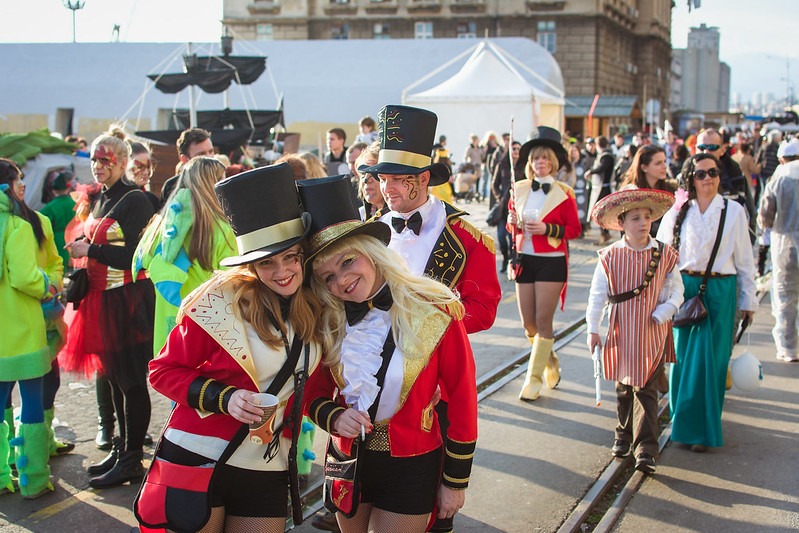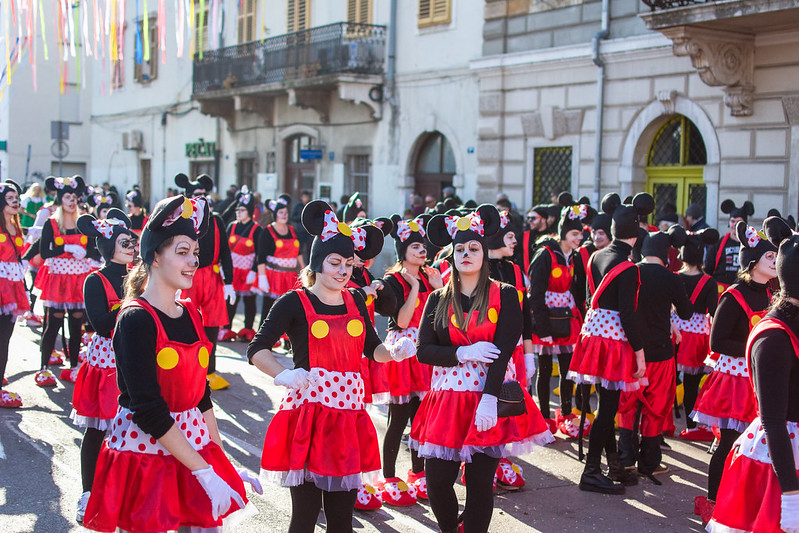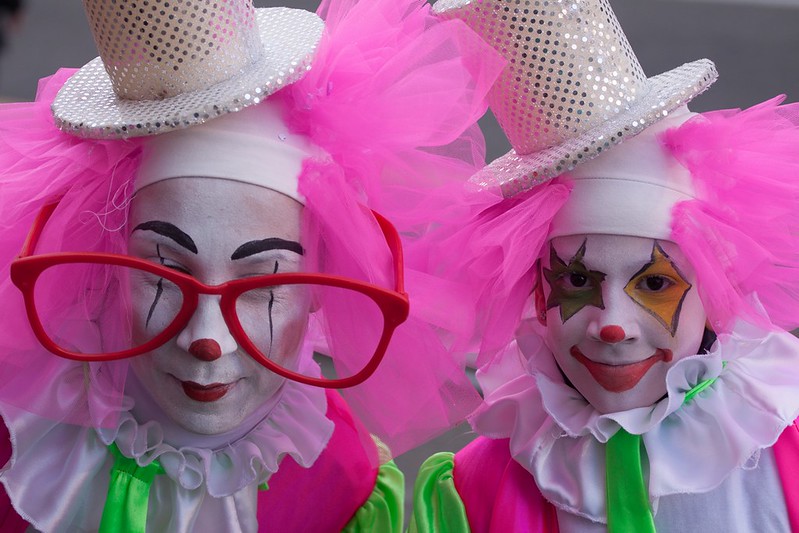Rijeka Carnival
A Festival Where Masks, Frenzy, and the Mediterranean Spirit Collide
2026/01/16 - 2026/02/14
Every winter, the Croatian port city of Rijeka is swept up in the fever of the Rijeka Carnival. One of Europe’s largest and wildest carnivals, it runs from mid-January to late February, drawing over 100,000 spectators and more than 10,000 costumed participants for an awe-inspiring celebration.
Locals, travelers, and families alike dive into the whirlwind of festivities. From ancient pagan rituals to modern parades, the city is transformed into a world where everyday life is forgotten and the extraordinary takes over.
Main Attractions
Grand Parade and Zvončari: The Heartbeat of Carnival
The highlight is the International Carnival Parade. For five hours, over 100 groups of dancers, marching bands, satirical floats, and fantastical costumes wind through the city. Brass bands, drumbeats, laughter, and confetti fill the air, and every corner pulses with dance and music.
Especially impressive are the Zvončari from Kastav, registered as UNESCO Intangible Cultural Heritage. Wearing sheepskins, animal masks, and giant cowbells, these “bell ringers” stomp and leap through the streets, driving away evil spirits and winter in a primal, powerful display of ancient Slavic tradition that leaves the crowd in awe.
Masquerade Balls, Children’s Carnival, and the Burning of the Pust Effigy
The Rijeka Carnival is more than just a parade. Lavish masquerade balls, street parties, and a children’s carnival parade with thousands of young participants are all highlights. The festival’s climax is the burning of the giant “Pust” effigy at the port, symbolically carrying away the misfortunes of the year. Fireworks and cheers light up the night sky.
Throughout the city, handmade masks-Venetian, grotesque, comical, or fantastical-abound, and balconies and streets are festooned with carnival flags and lights.
Traditional Food and Carnival Flavors
The aromas of the carnival are part of its charm. Grilled sausages, fritule (powdered mini-doughnuts), kroštule (crispy twisted pastries), and big pots of bean stew fill the food stalls. Local wines, rakija (fruit brandy), and hot mulled wine are favorites, all capturing the taste of Rijeka’s seaside and the abundance of the festival.
Cultural and Historical Background
The Rijeka Carnival’s history dates back to the Middle Ages, rooted in the Catholic tradition of pre-Lenten revelry-when people would feast, drink, and don costumes before the fasting period. Yet Rijeka’s carnival is also deeply tied to even older Slavic pagan rituals. The most famous example is the “Zvončari” bell ringers, who don animal horns, furs, and bells, parading through the streets to drive away winter, evil spirits, and misfortune, and to pray for spring’s return and a bountiful harvest.
From the Middle Ages to modern times, the carnival has also served as a “time of reversal” for citizens. Masks and costumes erase social boundaries, enabling ordinary people to satirize the powerful, play reversed roles, and release social tensions-fostering a sense of unity and freedom. This spirit of “the world turned upside down” still lives on in Rijeka’s parades, humor, and creativity.
In the 20th century, wars and political changes caused the carnival to decline, but in 1982, local enthusiasts revived it. Since then, it has grown every year as a symbol of Rijeka’s pride, identity, and intergenerational solidarity, attracting participants from Italy, Austria, Slovenia, and beyond.
Today, the Rijeka Carnival is an “open festival” blending tradition and innovation, local roots and international flair. For locals, it’s a source of pride and belonging; for the world, it’s a symbol of diversity and creativity. Through masks and parades, the joy of “liberating oneself and becoming one with everyone” still envelops the city.
Participant Voices
I came from Germany just for the carnival. The parade was incredible-the colors and music were amazing! I met a group of students dressed as giant sea creatures who spent months making their costumes. The fritule and hot wine made the festival atmosphere perfect.
Fun Facts
- The Zvončari (bell ringers) are registered as UNESCO Intangible Cultural Heritage.
- The Rijeka Carnival has been named one of the “world’s wildest festivals” by The Sunday Times and CNN.
- The burning of the Pust effigy symbolizes the end of winter and the casting away of misfortune.
Festival Dates
The event schedule is subject to change. Please check the official website for the most up-to-date information.
Information
| Name | Rijeka Carnival |
| Country | Croatia |
| Area | Rijeka |
| Date | 2026/01/16 - 2026/02/14 |
| Link |
Upcoming Festivals
Whirling Dervishes Festival Turkey
A Mesmerizing Dance of Divine Love
2025/12/06Mevlana Celaleddin Rumi Commemoration Ceremony ( Şeb-i Arus ) Turkey
A Whirling Journey to Divine Love
2025/12/10Dia de la Virgen de Guadalupe Mexico
A Festival Weaving Faith, Fervor, and Mexican Identity
2025/12/11L'Escalade Switzerland
Geneva’s Grand Winter Festival of Courage, Chocolate, and Community
2025/12/12Umkhosi Wokweshwama South Africa
The Zulu First Fruits Festival—A Sacred Celebration of Land, Ancestors, and Renewal
2025/12/12Lucia Festival (St. Lucia's Day) Sweden
A Festival of Light Illuminating the Nordic Darkness
2025/12/15Las Posadas Mexico
The Luminous Quest for Sacred Shelter
2025/12/22Noche de Rabanos (Night of the Radishes) Mexico
A celebration blending art, farming heritage, and cultural traditions
2025/12/23Chant of the Sybil on Majorca Spain
A Medieval Prophecy Echoes Through Majorcan Christmas
2025/12/23‘Hatajo de Negritos’ and the ‘Hatajo de Pallitas’ Peru
A Christmas Festival of Rhythm, Faith, and Afro-Andean Heritage in Peru’s Ica Region


